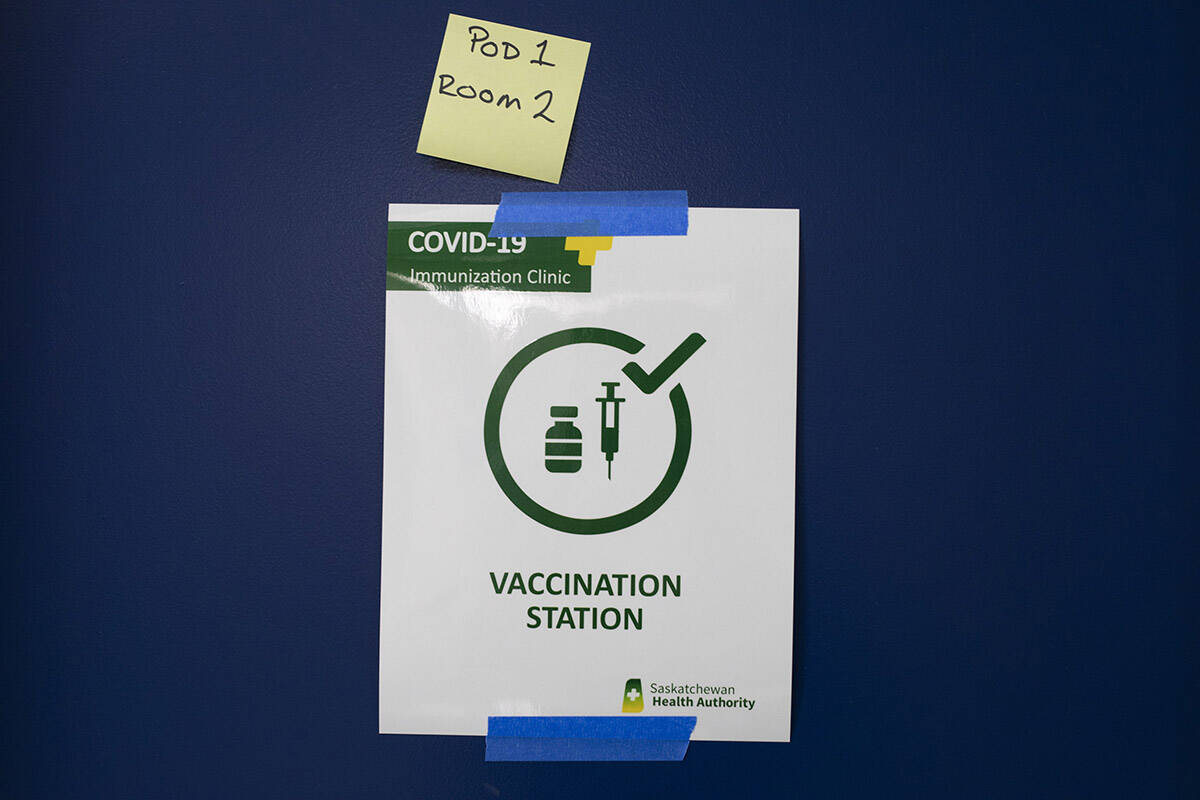The chief medical officer for the Saskatchewan Health Authority says the province’s health-care system would not be able to handle a serious collision like the Humboldt Broncos bus crash if it were to happen today.
Dr. Susan Shaw says surging COVID-19 cases have stretched resources to the limit and intensive care beds are full.
“I’m not trying to be dramatic. I think handling something like the Broncos collision would be challenging if it were to happen right now,” Shaw said Friday.
“I think about how we would deal with that when we’re already at full capacity.”
Sixteen people died and 13 were injured when a semi-trailer truck ran a stop sign into the path of the junior hockey team’s bus near Tisdale, Sask., on April 6, 2018.
Fifty people with COVID-19 were in ICUs across the province on Friday. The health authority projects that number will grow to 150 by the end of the month.
Saskatchewan’s plan for critical care resources says the province is likely to activate its second stage of triage if there are 119 patients in intensive care units. Doctors would have to consult their ethics team to decide who gets life-saving care.
The plan says people with end-of-life organ failure or someone over 80 who had a heart attack would be excluded from ICUs.
The province is already in the first phase of triage, in which choices are being made about which surgeries need to be cancelled to free up space and health-care workers.
Shaw said people need to talk about their end-of-life wishes with their families and doctors.
“So that should you ever need ICU, your family knows what you want, and we can continue to provide care based on your values. That’s where we’re at,” she said.
The Saskatchewan Health Authority is building space to make room for up to 175 ICU beds, which far exceeds the province’s baseline of 79.
It is also increasing its hospital capacity to care for a total of 350 COVID-19 patients who are not receiving intensive care.
Shaw said hospitals in central Saskatchewan, including Saskatoon, are being forced to send residents from neighbouring communities and who need critical care hundreds of kilometres to the south, including to Regina.
Saskatchewan and Alberta, which both fully reopened earlier in the summer, face the highest rates of COVID-19 in Canada and have the lowest rates of vaccination.
In Alberta, the CEO of Alberta Health Services warned during a news conference that the health provider has moved to its highest level of response to a collapsing health-care system.
“I cannot stress enough how serious the situation is in our hospitals,” Dr. Verna Yiu said this week.
She said Alberta would activate triage protocol as an “absolute, absolute last resort.” For now, staff are being educated on triage protocols.
As of Friday, there were 911 people hospitalized for COVID-19, including 215 receiving intensive care, in Alberta.
The air ambulance service known as STARS said it has been busy transferring COVID-19 patients across the Prairies to free up space in ICUs.
“I have needed to personally transfer somebody already in my ICU that … I’ve been looking after to another ICU in the province (by air ambulance)” Shaw said. “And that’s to make sure there’s capacity and safety in all units.”
Tracey Steel, clinical operations director for STARS, said between Sept. 1 and Sept. 16, about 16 per cent of calls in Saskatchewan and Alberta between Sept. 1 and Sept. 16 were for COVID-19 patients.
“Any time we are tied up with a patient, certainly a critical care patient, we won’t be available for that next car accident that comes up,” Steel said.
Both provinces announced proof of vaccination programs this week and brought in additional public health measures to try to preserve their health-care resources.
But health officials cautioned it won’t help reduce hospitalizations for at least another four to six weeks.
As a result, Saskatchewan is bracing for the worst.
“We have hit a critical point, and are now on the verge of the largest test our health-care system has faced since this pandemic began,” said Scott Livingstone, CEO of the province’s health authority.
— With files from Fakiha Baig in Edmonton
Mickey Djuric, The Canadian Press

